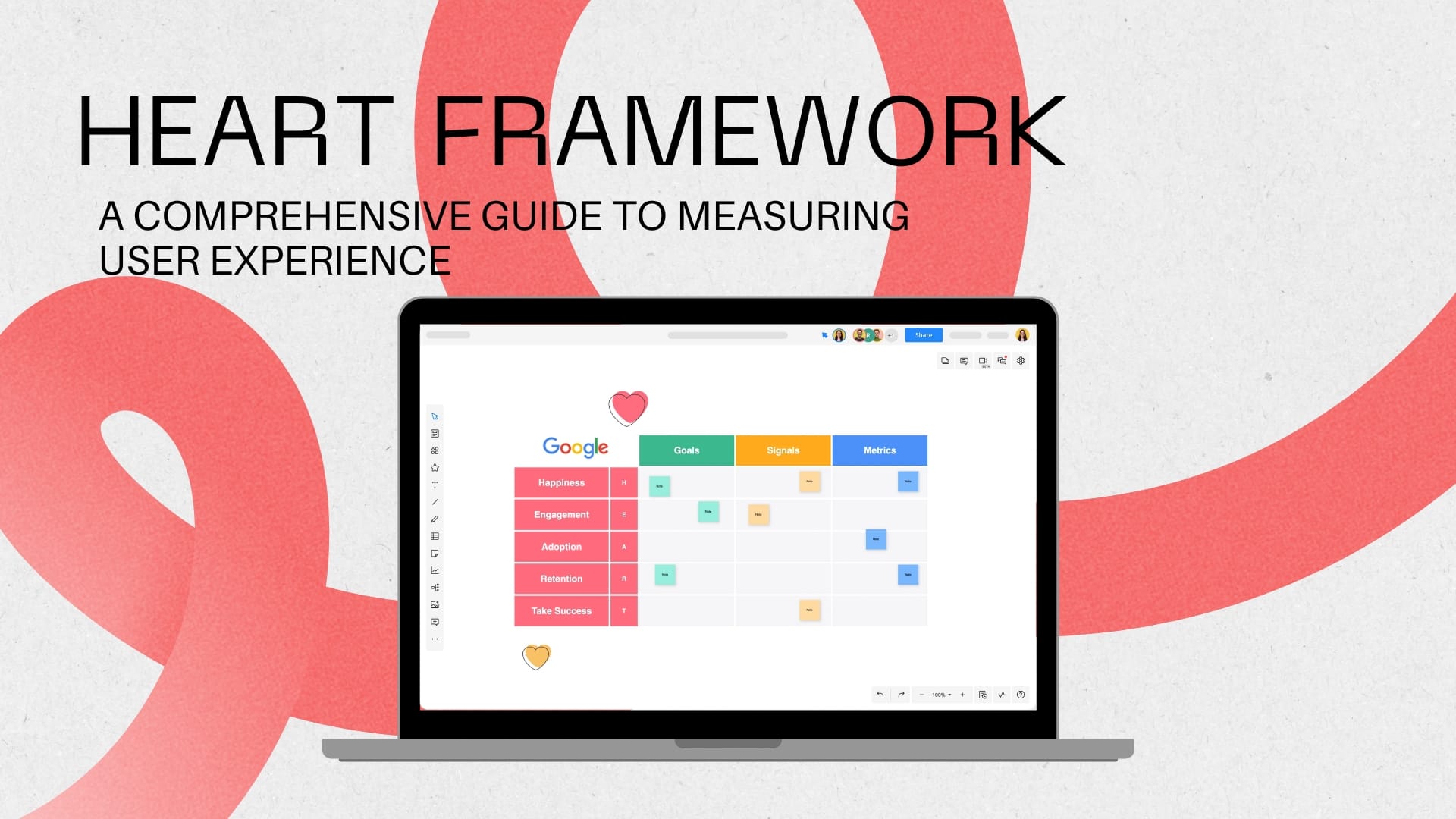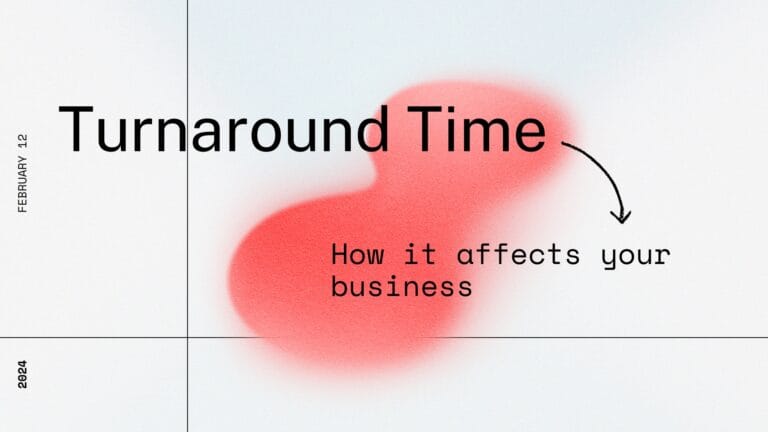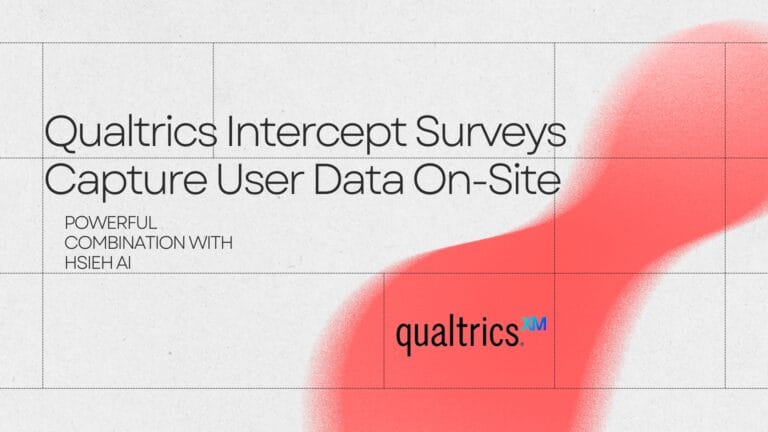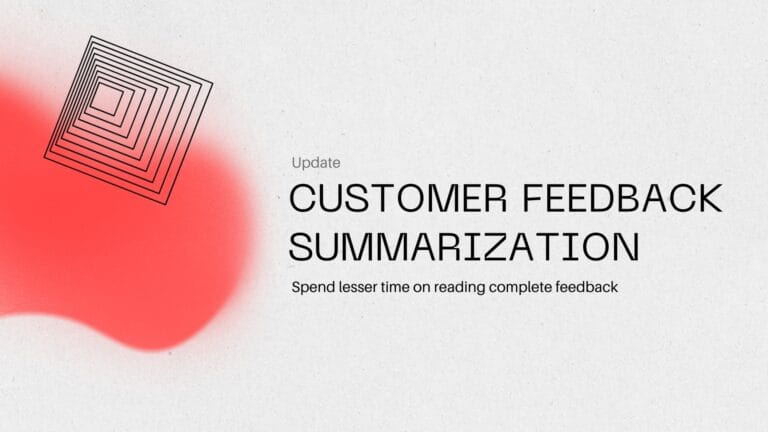In today’s digital landscape, creating a great user experience (UX) is essential for the success of any product or service. According to a study , 88% of online consumers are less likely to return to a website after a bad experience [1]. However, how do you measure the effectiveness of your UX efforts? The HEART Framework offers a structured approach to evaluating user experience across different dimensions, providing actionable insights to drive product improvements and customer satisfaction. As a project manager, I’ve seen firsthand how robust this framework can guide teams toward user-centred decisions. In this article, I’ll share how the HEART Framework works and why it’s a must-have tool, especially when combined with tools like Hsieh AI.
What is the HEART Framework template?
The HEART Framework Template is a user-centred evaluation model developed by Google’s UX researchers to help teams measure the success of their products from a user experience perspective. HEART stands for
1- Happiness
2- Engagement
3- Adoption
4- Retention
5- Task Success
Five essential metrics provide a holistic view of how users interact with your product.
By focusing on these specific areas, the HEART Framework allows teams to set measurable goals, track progress, and make data-driven decisions to enhance the overall user experience.
Breaking Down the HEART Framework
Let’s examine each component of the HEART Framework more closely and understand how it can be used to measure and improve UX.
- Happiness measures user satisfaction and sentiment toward your product. This can be gauged through user surveys, Net Promoter Score (NPS), or customer feedback. Understanding user happiness helps you assess the emotional response to your product, which is crucial for long-term success.
- Engagement tracks how users interact with your product, focusing on the frequency and depth of use. Metrics such as active users, session duration, and interaction rates are common ways to measure engagement. High engagement indicates that users find value in your product and are motivated to continue using it.
- Adoption reflects how quickly new users begin using your product or features. This is often measured by tracking the number of new users or sign-ups over time. Adoption is crucial for understanding your product’s initial appeal and the onboarding process’s effectiveness.
- Retention measures the ability of your product to keep users coming back over time. This category’s key metrics are retention rates, churn rates, and customer lifetime value. High retention indicates that users find ongoing value in your product, which is essential for long-term growth.
- Task Success evaluates how efficiently and effectively users can complete critical tasks within your product. Metrics such as task completion rates, error rates, and time on task help identify usability issues and areas for improvement. Ensuring task success is critical for a smooth user experience.Here’s a link for HEART Framework google template which you can use
Enhancing the HEART Framework with Hsieh AI
While the HEART Framework is excellent for measuring user experience, pairing it with advanced tools like Hsieh AI can take your analysis to the next level. Hsieh AI is a feedback intelligence engine that uses artificial intelligence to categorize and route customer feedback to the right teams. Here’s how integrating Hsieh AI can enhance your use of the HEART Framework:
- Automated Feedback Categorization: Hsieh AI can automatically sort user feedback collected from various sources, including those related to Happiness, Engagement, and Task Success. This means less manual work for your team and faster insights into user sentiment and behaviour.
- In-Depth Analysis: Hsieh AI doesn’t just categorize feedback—it analyzes it to uncover trends and patterns. For example, suppose your HEART Framework metrics show a drop in user happiness. In that case, Hsieh AI can help pinpoint the exact causes, whether they’re related to a specific feature, design issue, or service problem.
- Actionable Insights: Combining the HEART Framework’s structured metrics with the advanced analysis provided by Hsieh AI gives you a powerful toolkit for making data-driven decisions. This combination ensures that your team can act quickly on the most pressing issues, improving user experience in a targeted and efficient way.
- Scalability: As your product grows, so does the volume of user feedback. Hsieh AI scales with your needs, ensuring you can continue applying the HEART Framework effectively, even as your user base expands.
Implementing the HEART Framework
To successfully implement the HEART Framework, follow these steps:
- Define Clear Objectives: Identify what you want to achieve with your product. Are you looking to increase engagement, improve retention, or boost user satisfaction? Clearly defined objectives will guide your measurement strategy.
- Choose Relevant Metrics: Select the HEART metrics that align with your objectives. For example, if improving user satisfaction is your goal, focus on the Happiness metric and related data.
- Collect and Analyze Data: Use tools like Google Analytics, user surveys, and feedback forms to gather data on your chosen metrics. Regularly analyze this data to track progress and identify trends.
- Iterate and Improve: Based on your findings, make iterative changes to your product to enhance the user experience. Continuously monitor the impact of these changes on your HEART metrics, leveraging Hsieh AI for deeper insights and quicker responses.
Why the HEART Framework Matters
As a project manager, I find that the HEART Framework offers a comprehensive approach to measuring and improving user experience. It’s not just about tracking numbers—it’s about understanding the stories behind those numbers and using that understanding to make meaningful changes. When combined with a tool like Hsieh AI, the HEART Framework becomes even more powerful, enabling teams to turn user feedback into actionable strategies that drive product success. Heart framework can be used for product management related tasks.
The HEART Framework is invaluable for any team looking to optimize their product’s user experience. By measuring key metrics such as Happiness, Engagement, Adoption, Retention, and Task Success, you can gain deep insights into how users interact with your product and where improvements are needed.
But don’t stop there. Integrate Hsieh AI into your feedback strategy to automate, analyze, and act on user feedback more efficiently. The HEART Framework and Hsieh AI provide a comprehensive solution for improving user experience and driving product success.
If you aim to enhance your product’s UX and make data-driven decisions that genuinely resonate with users, consider adopting the HEART Framework and leveraging Hsieh AI. By doing so, you’ll be well on your way to delivering exceptional experiences that keep users returning.




